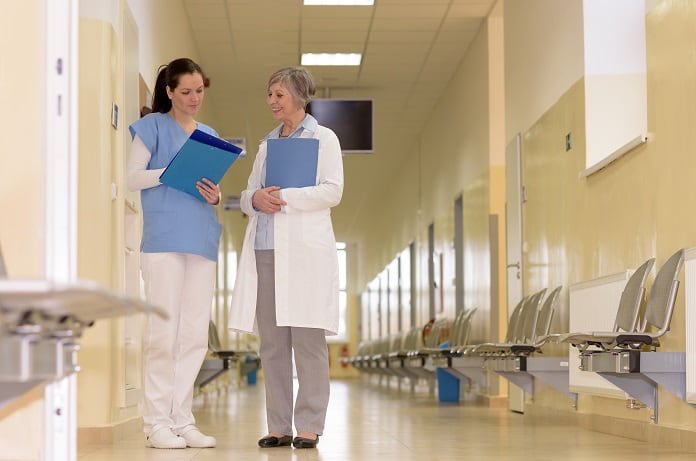Antibiotic development has been one of the greatest achievements of twentieth-century medicine. Diseases that once killed thousands are now treatable, curable, and almost eliminated thanks to antibiotics. However, due to antibiotic resistance, the very medicine that once cured us of diseases now threatens to render these same diseases incurable. This means that antibiotics will no longer be able to treat illnesses like pneumonia, tuberculosis, strep throat, and other bacterial infections effectively. In serious cases, this could lead to death.
What is antibiotic resistance?
The word “antibiotic” literally means “against life”. Antibiotic treatment works to treat infections by either killing or slowing the growth of bacteria that cause illnesses. When antibiotic resistance occurs, bacteria become resistant to the antibiotic drugs used against them. The bacteria then continue to multiply and infect.
How does it occur?
Antibiotic resistance can occur naturally. There are some bacteria that have the ability to resist antibiotics and survive. However, the overuse and misuse of antibiotics in recent years have largely increased the global threat of antibiotic resistance.
Examples of the misuse of antibiotics:
- Giving antibiotics to people and animals when unnecessary
- Taking antibiotics without a personal prescription from a physician
- Using antibiotics for an infection not caused by bacteria (i.e. the flu, common cold, etc.)
- Stopping antibiotic use earlier than prescribed by a physician
Antibiotic resistance can occur in any person, age, and place. Resistant bacteria can easily spread among people and animals.
Raising global awareness
World Antibiotic Awareness Week, occurring this November 12-18, 2018, aims to increase the awareness of antibiotic resistance around the world. The goal is to encourage the general public, health workers, and policymakers to employ best practices in antibiotic use. We must work together to avoid the further emergence and spread of antibiotic resistance.
Read about the latest research in antibiotic resistance below.
The latest research in antibiotic resistance
1. How can hospitals prevent antibiotic resistance?
Antibiotic resistance is a major concern in hospitals. Patients with compromised immune systems are susceptible to antibiotic-resistant pathogens and vulnerable to infections. While studies have shown that preventive measures like hand hygiene and chlorhexidine bathing can reduce antibiotic resistance by gram-positive bacteria, these interventions have not shown to be effective in controlling the emergence of gram-negative bacteria.
In a recent study, researchers compared the effects of different antibiotic strategies on the prevalence of antibiotic resistance in gram-negative bacteria across Europe. They found that one strategy, antibiotic rotation, did not reduce antibiotic resistance in intensive care units. Read more about their findings here.
2. Multiple factors precipitate the rise of antibiotic resistance
Antibiotics are commonly used to treat upper respiratory tract infections like acute bronchitis and bronchiolitis. Unfortunately, there has been a problem of prescribing these antibiotics to patients when unnecessary, which leads to antibiotic resistance.
In a recent study, researchers found that healthcare providers prescribed antibiotics 407 times out of 1000 visits – an exceptionally high number. The authors concluded that both the patients and healthcare providers are responsible for the unnecessary prescription of antibiotics. Patients and healthcare providers should both be educated about antibiotic resistance. Read more about their findings here.
3. How does antibiotic prescribing differ in healthcare settings across the US?
Healthcare professionals and the general public both need to be aware of the risks associated with inappropriate antibiotic use. In a study published in JAMA Internal Medicine, researchers compared antibiotic prescribing in urgent care centers, emergency departments, retail clinics, and medical offices. They found that the highest amount of antibiotic prescriptions took place at urgent care centers, followed by retail clinics, emergency departments, and then medical offices. Read more about their findings here.
4. Global shortage of old antibiotics limits treatment options
There is currently a global shortage of old antibiotics, which may still be able to treat the majority of common bacterial infections. This leaves healthcare providers with limited treatment options. The newer antibiotics have been found to be less effective, have more side effects, cost more, and contribute to antibiotic resistance.
A recent study in The Lancet Infectious Diseases discussed the many causes of the global shortage of old antibiotics. One cause is due to manufacturing and quality concerns, which can cause a global back order. This led to skyrocketing price increases for old antibiotics. They urge that health authorities like the FDA and Health Canada need to take responsibility for providing access to old antibiotics, but international collaboration is needed. Read more about their study here.
 Read more about the latest research on antibiotic resistance here.
Read more about the latest research on antibiotic resistance here.
Written by Jessica Gelar, HBSc
References:
- Caetano G. How can we prevent antibiotic resistance in hospitals? – Medical News Bulletin | Health News and Medical Research [Internet]. Medical News Bulletin | Health News and Medical Research. 2018 [cited 13 November 2018]. Available from: https://www.medicalnewsbulletin.com/how-can-we-prevent-antibiotic-resistance-hospitals/
- Sharma A. Multiple factors precipitate the rise of antibiotic resistance – Medical News Bulletin | Health News and Medical Research [Internet]. Medical News Bulletin | Health News and Medical Research. 2018 [cited 13 November 2018]. Available from: https://www.medicalnewsbulletin.com/multiple-factors-precipitate-rise-antibiotic-resistance/
- Shah H. How does antibiotic prescribing differ in healthcare settings across the US? – Medical News Bulletin | Health News and Medical Research [Internet]. Medical News Bulletin | Health News and Medical Research. 2018 [cited 13 November 2018]. Available from: https://www.medicalnewsbulletin.com/antibiotic-prescribing-healthcare-settings/
- Caporuscio J. Global shortage of old antibiotics limits treatment options – Medical News Bulletin | Health News and Medical Research [Internet]. Medical News Bulletin | Health News and Medical Research. 2018 [cited 13 November 2018]. Available from: https://www.medicalnewsbulletin.com/global-shortage-of-old-antibiotics-limits-treatment-options/
- Canada P. Effects of antibiotic resistance – Canada.ca [Internet]. Canada.ca. 2018 [cited 13 November 2018]. Available from: https://www.canada.ca/en/public-health/services/antibiotic-antimicrobial-resistance/impacts-antibiotic-resistance.html
- The History of Antibiotics [Internet]. HealthyChildren.org. 2018 [cited 13 November 2018]. Available from: https://www.healthychildren.org/English/health-issues/conditions/treatments/Pages/The-History-of-Antibiotics.aspx
- World Antibiotic Awareness Week [Internet]. Who.int. 2018 [cited 13 November 2018]. Available from: http://www.who.int/who-campaigns/world-antibiotic-awareness-week






